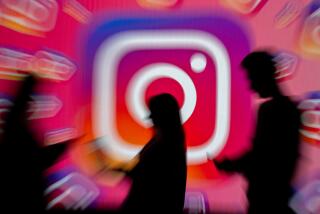The rise and fall of Meerkat buzz -- and the problem with tech journalism
Technology crazes come and go so fast these days that they can arrive, collect millions from investors and disappear before most people even have heard of them.
For example: Meerkat. I’d seen so many references to this mobile app that a few days ago I figured I should look into what the thing actually does. Imagine my surprise to discover that it’s already the Last Big Thing. Barely two weeks ago at Austin’s SXSW festival, Meerkat was being hailed as the Future. Now, it’s Yesterday.
The life arc of Meerkat can be traced through the superlatives employed by tech blogs to describe it starting when it was barely a week old. PandoDaily called it a “hot new video app” with “real magic.” TechCrunch called it “the live streaming app Twitter should have built.” (“People love it,” the site added.) The Verge called it “truly novel” and a “breakout hit” at SXSW.
Within days, some of these same sites were wondering whether Meerkat was, in fact, doomed. TechCrunch dismissed it as a “rough-shod app built in 10 days” that was in danger of being exterminated by Periscope, an app brought out by Twitter. Time lag between that first TechCrunch item and the latter: 12 days. The Verge updated its Meerkat coverage Wednesday with one of the better reconstructions of the rise and fall of Meerkat buzz. Also this week, Tero Kuittinen of the tech blog BGR was writing about the “Great Meerkat Debacle” and labeling the product’s “success” as “a phenomenon that did not exist.”
The tech blogging community deserves considerable blame for this cycle of hype and bust, of which Meerkat is only one instance. We’ve raised questions before about tech bloggers’ conflicts of interest with venture investors, who back them financially to write about, well, venture investments. Among the consequences of this insular ecosystem is the impulse by tech writers to find in every novel app some reason to call it a world-beater.
To return to the original question, what is Meerkat? Simple enough: it’s a mobile app that allows users to send friends and strangers real-time video streams shot on their smartphones. The app was an add-on to Twitter, in the sense that it would automatically alert your Twitter followers that you were streaming and allow them to tune in if they wished.
Savvy techies spotted the hole in this business model early on: Meerkat’s developers had no business relationship with Twitter, which could exterminate the app by shutting down its users’ automated access to their roster of Twitter followers. That’s exactly what Twitter did, just as SXSW was getting underway.
Why? Because Twitter had acquired its own video streaming app, named Periscope, which it promptly introduced. Periscope’s popularity quickly overwhelmed Meerkat, according to some market surveys. That may be because it has better features--videos can be stored via Periscope, but on Meerkat they disappear forever once shooting ends--and because it’s better integrated into Twitter.
Still, the hype phase lasted through SXSW and beyond. Last week, on the same day Twitter launched Periscope, Meerkat announced $14 million in venture funding from more than a dozen firms and celebrity investors such as actor Jared Leto.
All this hubbub is happening before anyone could have a clear idea of what the market is for viewing live video streams on one’s iPhone. Many other social media services faced the same questions of utility before reaching success, including Twitter. But so have many failures. It’s not unusual for an app to sound intriguing and raise millions during a buzzy “beloved by tech insiders” phase on its way to oblivion.
The utility and popularity of live streaming video on your phone is conjectural today, at best. Video is time-consuming and attention-monopolizing--you can’t view a video while doing much of anything else, like driving or walking down a crowded street, as you can with music; you can’t skim it or scan it for the gist as you can with the written word. That could limit its appeal. Or not.
Promoters talk about these products’ value for breaking news, say by providing you-are-there video from the recent Manhattan building collapse. But at least at this early stage anything that useful would be drowned out by babbling. As I write, the highlights of the Periscope feed on my iPhone are a lecture at a policy conference conducted in (I believe) Turkish; a woman’s video of the view from her Hawaii hotel room mostly showing her balcony’s concrete floor; and a couple of slobs blathering incoherently into their phone from the back seat of a cab.
Undoubtedly the mode will evolve. But the folly and pointlessness of technology journalists’ trying to pick winners from among would-be, will-be, and never-will-be products become clearer every day. Venture investor Gary Vaynerchuk wrote this week of the Meerkat vs. Periscope battle (he has money in Meerkat) that “it is foolish for any pundits, gurus, or journalists to declare a winner 13 seconds into it.”
His best advice: “Stop trying to predict things.”
Keep up to date with the Economy Hub. Follow @hiltzikm on Twitter, see our Facebook page, or email mhiltzik@latimes.com.







